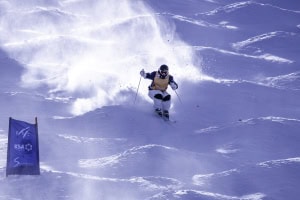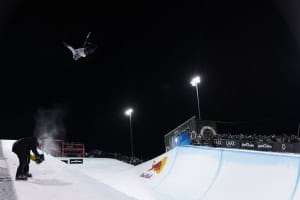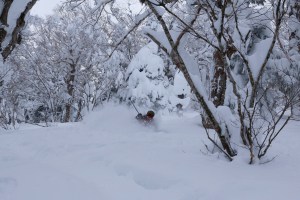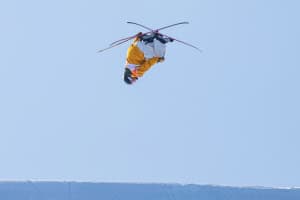SNOW SEASON OUTLOOK 2012 Australia
Snow season outlook | The Grasshopper
Brought to you by ESS Boardstores
Mirror mirror on the wall, how much snow is gonna fall? Hi ho, hi ho, tell me if the winds will blow? It’s time of take a look at what we can expect for NSW and Victoria’s ski resorts this winter. Will we have to swallow that poisoned apple of high freezing levels and warm rain, or will 2012 be the fairest of them all?
To have any sort of clue, we’re going to have to grab the climate by the scruff of the neck and shake it like crazy to see what secrets we can dislodge.
First, remember this number: 176.
That’s the median maximum snow depth in centimetres recorded at Spencer’s Creek in the Snowy Mountains over the last 41 years. That means that since 1971, 20 years have recorded higher than 176, 20 years have recorded lower, and one year (2002) was bang on. This will give us a baseline to measure the peak of previous years against. You can see in the graph below the distribution of events, with 150 to 175cm the most common range, and a long tail out to the right. We haven’t had a year above 2 metres since 2004 so fingers, toes and skis crossed for one of those long tail years.

ENSO
Now let’s look at what’s happening with some key global indicators and what they’re expected to do over winter. The El Nino Southern Oscillation (ENSO) is an important seasonal driver for Australia’s weather. Generally, El Nino leads to higher atmospheric pressures over south-eastern Australia and less rain in winter and spring, whereas El Nino’s opposite, La Nina, leads to lower atmospheric pressures and more rain.
But here’s the kicker: more (or less) rain doesn’t necessarily mean more (or less) snow, because we also need to take into account whether temperatures are cold enough for snow when that rain falls. In fact, over the last 41 years it’s been ENSO neutral years which have come out slightly ahead, with a median max depth of about 187cm, compared to 173 for La Nina years, and 168 for El Ninos.
As luck would have it, most global models at this stage suggest we’re heading into a neutral winter – so that’s encouraging – but it also pays to remember that there’s still time for the forecasts to be wrong and for a La Nina or El Nino to develop.

Remember this? Perisher’s GM skiing on the roof of the Perisher Centre last July during what’s been labelled one of the best weeks in recent years. Image:: Perisher
IOD
We can also play this game with the Indian Ocean Dipole. Negative dipole events, when waters off north-west Australia are warmer than normal, mean more rain for south-east Australia and have also translated into a median maximum snow depth of 194cm. Positive events are the opposite, and have clocked a median of 166cm.
As it happens, we’re also expecting the Dipole to be neutral this year, and these years have turned in a median of 173cm. At least that’s not bad news.

Simon Blondel charging through the trees in Thredbo during that epic July week. Image:: Ben Hansen
Round up the usual suspects
So are there any years in the climate record similar to this one? In addition to expecting a neutral ENSO, we know that we’ve just come out of a La Nina. We’ve also got a large patch of unusually warm water in the oceans immediately south and west of Australia that could come into play, adding a bit of energy and moisture to low pressure systems moving through.
This is very roughly similar to 1985, 1989, 2001, and 2008. These were all ENSO-neutral, post-La Nina years, in which Spencer’s Creek clocked up maximum snow depths of 174 cm, 141cm, 196cm and 174cm respectively. 1985 and 2008 had a nice solid base from early July, whereas 1989 and 2001 had a slow start, and didn’t really get cracking until mid-to-late August.

Falls creek, July 2011. Image:: Chris Hocking
2012 in a nutshell
Take everything we’ve just seen, shake vigorously, add a pinch of optimism and here’s a forecast for this winter:
Warmer than normal conditions will contribute to a reasonably slow start, with the usual nerves in June. Warm, humid conditions could also cause problems for snow-making.
The first decent 30cm+ storm will occur in July.
Spencer’s Creek snow depth to break one metre by late-July, and to top out at 170cm.
Got a different opinion? By all means send it through and we may publish the most interesting takes on Winter 2012.
That’s all from the Grasshopper. We’ll be updating this forecast monthly right up till opening weekend, so stay tuned for new information. As always, if you’ve got questions, feedback, or a bone to pick, hit me up at grasshoppermw@gmail.com or facebook.







